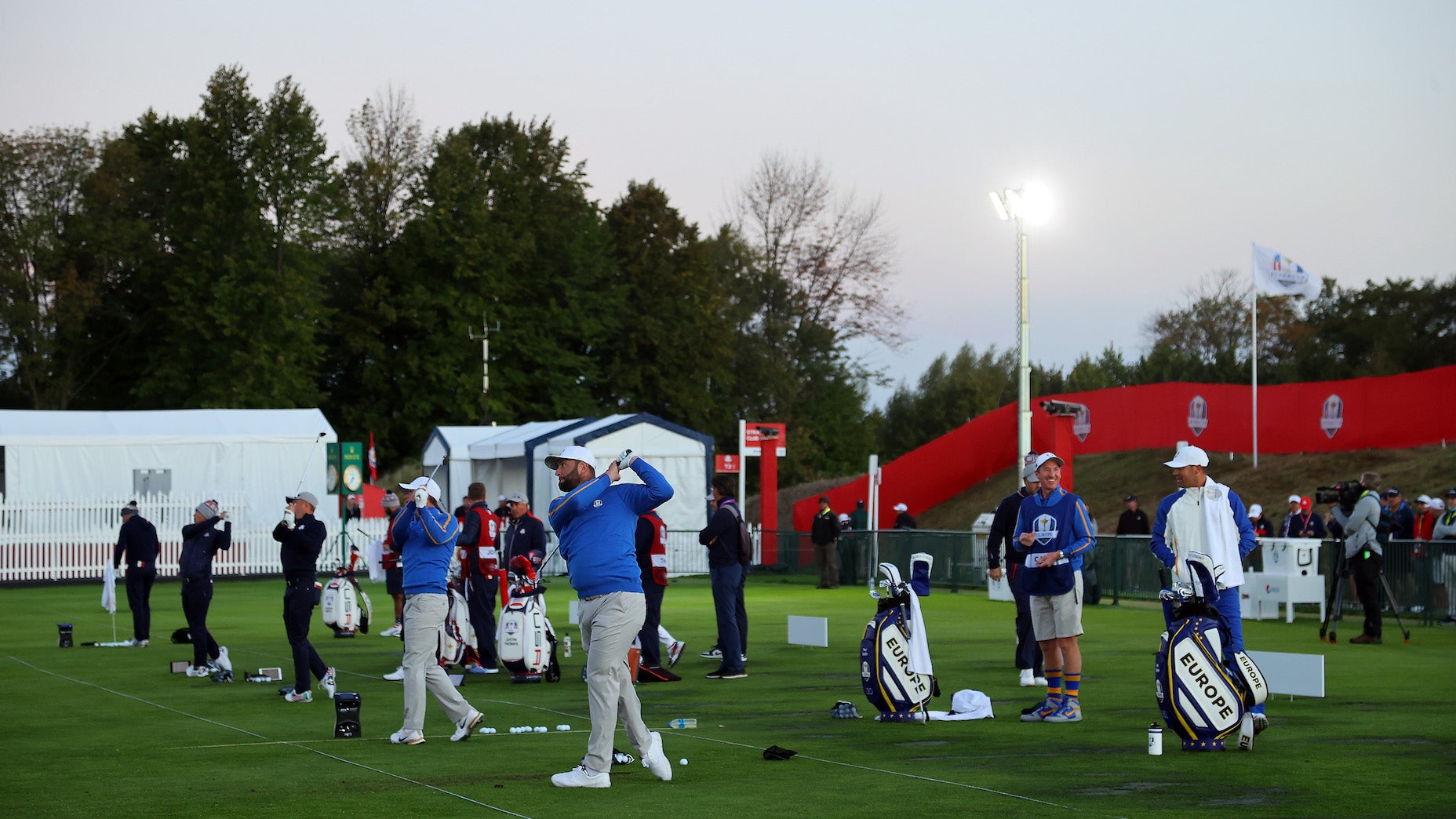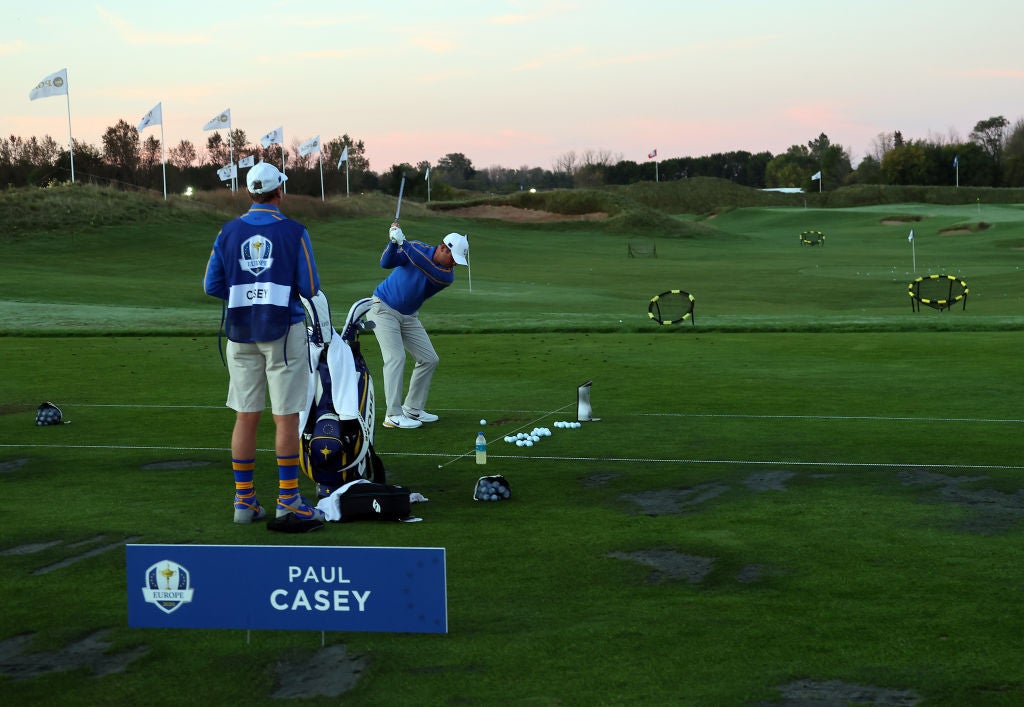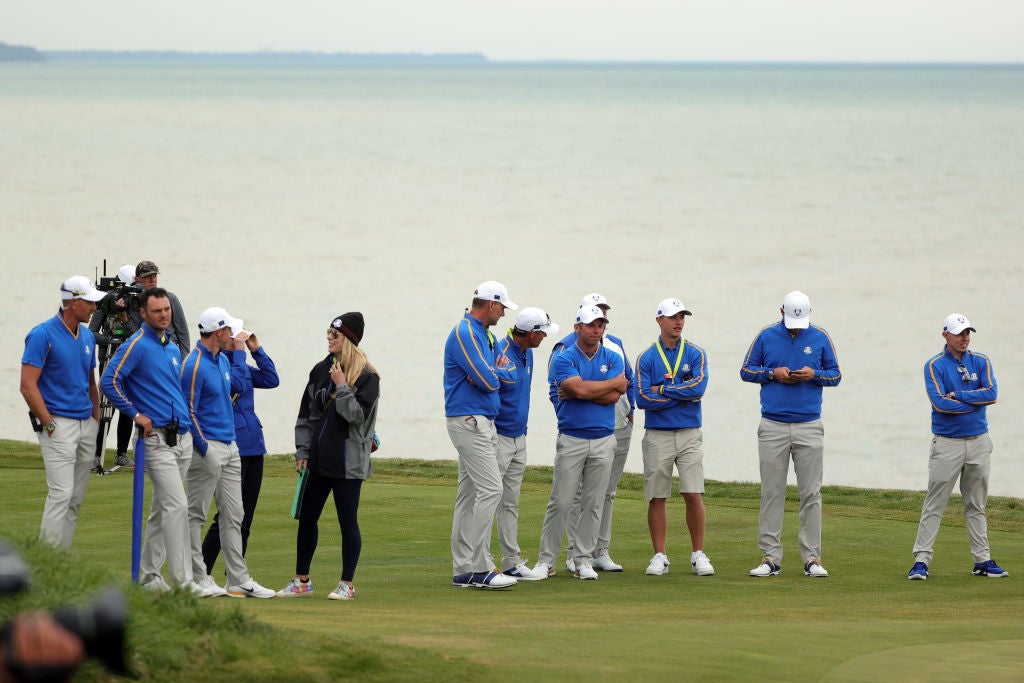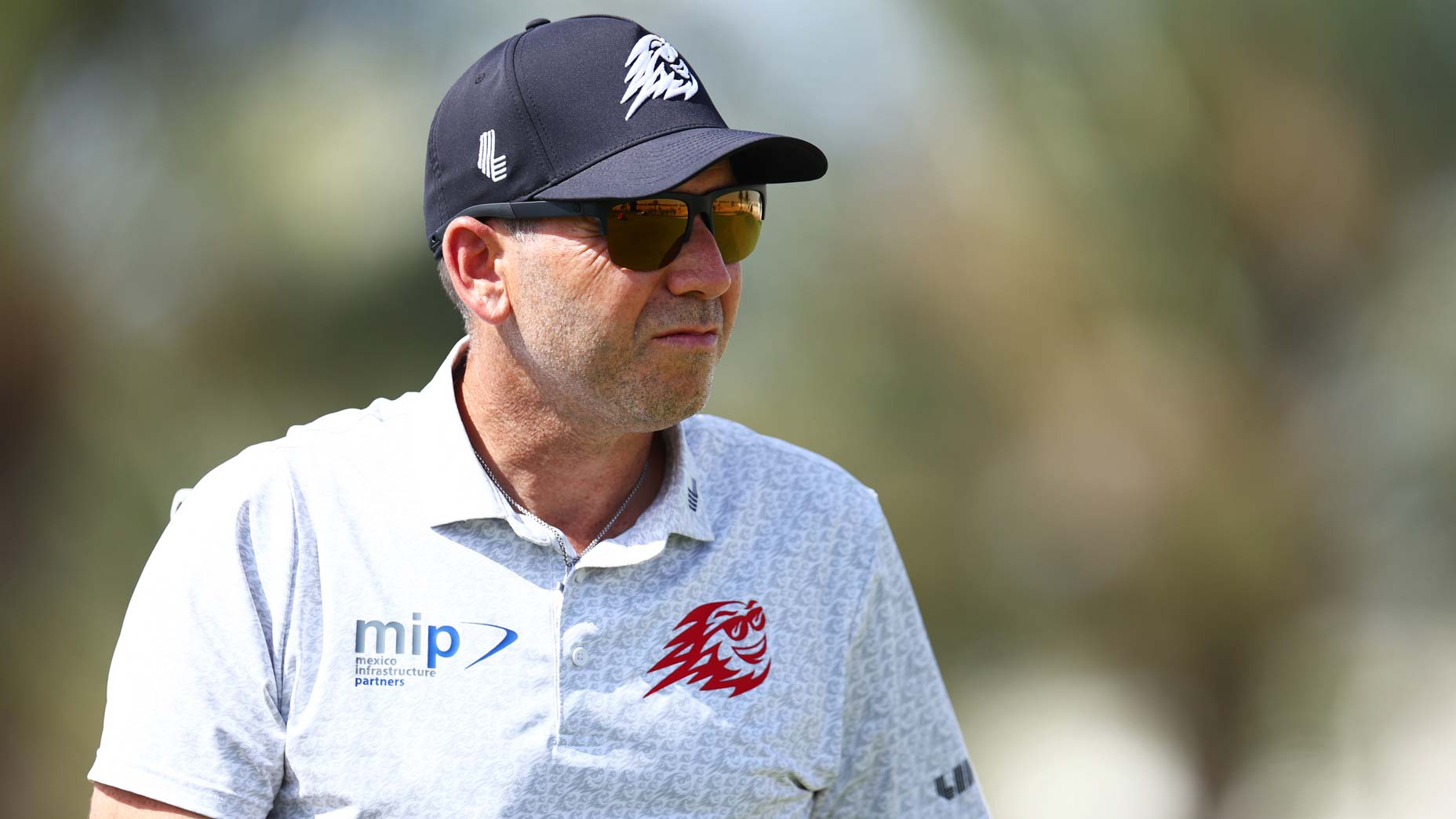Here’s what a Ryder Cup player’s hectic daily schedule looks like

The Ryder Cup may be the busiest week in golf for players and their teams.
Getty Images
HAVEN, Wis. — Most professional sporting events happen later in the day — during prime time, or in the middle of the afternoon. Golfers are some of the few professional athletes who operate without the luxury of sleeping in. They have to set an alarm, drag themselves out of bed early in the morning and still perform at an elite level.
That’s never more true than during Ryder Cup week. It’s the one week every two years when professional golfers aren’t in complete control over their own schedules — and the only event where they routinely wake up at the crack of dawn so they have time to fit two pressure-packed rounds in.
Wondering what a day in the life of a Ryder Cupper looks like? On the grounds here at Whistling Straits, we talked to a series of different coaches, players and other support staff to get a sense of what happens hour by hour. The exact timing obviously changes based on when you’re playing, but if you’re in the lineup early, here’s what your day looks like.
4 a.m.: Wake up
Players competing in the morning session will wake up sometime between 4 a.m. and 5 a.m. so they’re ready to get to the course ahead of the first tee time, which this week was 7:05 a.m. local.
4:15 a.m.: Hit the gym
Soon after waking up, players get changed and head down to the gym. Marnus Marais knows this first-hand. The well-respected physical trainer (who you can follow on Instagram right here) works with a host of top-level players, among them Dustin Johnson, Xander Schauffele, Patrick Cantlay and Matt Fitzpatrick. All four of those players were teeing off between 7:05 and 7:53 Saturday morning, which made for a busy schedule as his players started rolling through.
“The first session is lots of stretching, getting loosed up,” Marais said. “It’s flexibility focused … strength comes after breakfast.”
4:30 a.m.: Breakfast
After players get stretched out, it’s time for a quick bite to eat. The food will be a balanced, high-protein meal to power them through what’ll be a long day. Think fruit, oatmeal and eggs. It’s a quick turnaround during Ryder Cup week, so no dilly-dallying.
5 a.m.: Back into the gym
After players get something in their stomachs, it’s time to go back into the gym. The first session was focused mostly on flexibility and stretching. This time, it’s a quick strength-focused routine, with an eye toward stability and mobility so your body is ready to perform. We’re not talking heavy weights, but rather medicine balls, band work and body-weight movements.
“Each player has specific exercises they do to activate specific parts of their body,” Marais says, adding that the process takes about 20 minutes. “It’s getting your muscles turned on.”

5:20 a.m.: Get dressed
With their body prepped and activated, it’s time to get spiffed up. All players’ clothes for the event are provided in advance of competition, with clear instructions about when to wear each outfit. Shower, shave and get the uniform on.
~5:40 a.m.: Off to the course
The exact departure time is obviously dependent on how long it takes players to get dressed and ready, but both teams are staying in hotels within Covid-compliant player bubbles. The U.S. team is staying at The American Club which, without traffic, is about 15 minutes from the course. But you don’t want to cut it too close. Traffic was so unexpectedly bad on Friday that multiple players, including Xander Schauffele, required a police escort to get to the course without delay.
~6 a.m.: Driving range
About an hour before their tee time, players start arriving at the course and head straight to the driving range. Their coaches and caddies will be here by this point — players usually let their coaches know what time they are getting to the course the night before. They’ll start by hitting lots of wedges, then work their way up through their bag.
Coaches, for their part, operate with an especially light touch this week. Some players use ball-tracking technologies like Trackman and Foresight to keep an eye on their yardages, but if there’s ever a time to avoid tinkering with your golf swing or equipment, it’s Ryder Cup week.
“It’s a fun one to be a part of,” says GOLF Top 100 Teacher Jamie Mulligan, who doubles as Patrick Cantlay’s teacher. “We try to keep things really simple.”
~6:40 a.m.: Putting green
No point getting too specific with the exact timestamps on these, because every player prefers a different balance. For the most part, they start on the range, make a quick stop at the chipping green, then spend about 20 minutes putting before their tee time.
Once again, players’ coaches are already waiting for them — they arrived in advance to set up a series of drills designed to help their players perform.
“It’s a big week, but our preparation doesn’t change,” says putting coach Phil Kenyon, who coaches multiple European team members, including Lee Westwood, Fitzpatrick and Tommy Fleetwood. “We work on start line and routine so players feel mentally prepared for the day.”
7 a.m.: First morning tee time
The first tee time is at 7:05 a.m. local. Fans are ramped up and ready. Players make a nervy walk to the tee and enter about five minutes before they’re due off. There will be some customary pre-match niceties, but not many. By this point, they’re in game mode.
Players who don’t play in the morning wave will usually make an appearance at the course, though they’ll delay the gym work to the afternoon and opt for a few extra hours of sleep instead.
~12 p.m.: Lunch and re-warm up
Obviously, each round ends at a different time, but in 2021 the first sessions were foursomes, which meant players got around the course faster than a fourball session. If we use Saturday’s Rahm-Garcia vs. Koepka-Berger group as a reference point, they were the first group off at 7:05 a.m. and won their match on the 17th hole, almost exactly 4 1/2 hours later.
All of which is to say that players are starting to come off the course around noon, and with the first group in the afternoon off at 12:26 p.m., it’s a quick turnaround for players like Rahm, Garcia, Johnson, Hatton, Rahm, Koepka, Spieth and Hovland, who played in both Saturday sessions.
For those playing in the afternoon, lunch will be something light — a sandwich of some sort, usually — and after that, players will head back to the range for an abbreviated re-warm up session. They won’t spend as much time hitting balls or putting as they did in the morning, just enough to stay loose.
12:26 p.m.: First afternoon tee time
And that’s the beauty of the Ryder Cup: We’ve got another session of play, so players start filtering back to the first tee. If they’re on the bench in the afternoon as Berger, Thomas, Cantlay, Westwood, Fitzpatrick, Morikawa and Casey were, they’ll take as long as they want for lunch before heading back onto the course. Perhaps they’ll even enjoy a beverage or two.
~6 p.m.: Media and teammates
Fourballs take a little longer, so at around 6 p.m. players’ matches start ending. Generally, players will do a quick television interview after their match ends and then head back out to the course to watch their teammates. Some will stop by the media center for a secondary round of interviews and then go back on the course. Others will delay the media center stop until after all the matches end. It’s all a bit messy, but honestly, the chaos is quite fun.
7:15 p.m.: Leave the course
With everybody off the course and media obligations fulfilled, players start leaving to return to their respective home bases ahead of dinner.
7:30 p.m.: Team meetings and dinner
Each team will eat dinner together and wind down from the day’s action. The time varies based on the details of the above, but it’ll last between 45 minutes and an hour.
Wondering what’s on the menu? Something high calorie and high protein.
“Steak and a vegetable,” Cantlay said as he was walking off the course on Saturday. “Probably artichokes.”

8:30 p.m.: Massage
Remember Marnus? It’s a long week for him too, because after dinner, his players will return for a quick 20-minute massage. It’s especially important after the long, physically taxing days to prevent any stiffness from arriving the following day.
“It’s not long, just some quick work to avoid some soreness and tension for the following morning,” he said.
9 p.m.: Time for bed
At this point, players do what they want — maybe enjoy a quick game of ping-ping — but generally speaking, they’re getting early nights so they can do it all again the next day.












